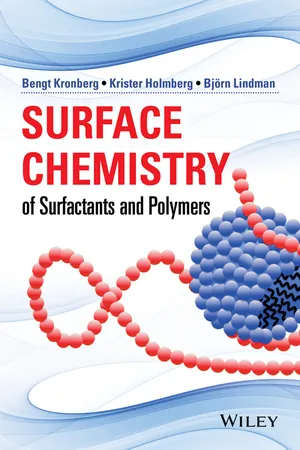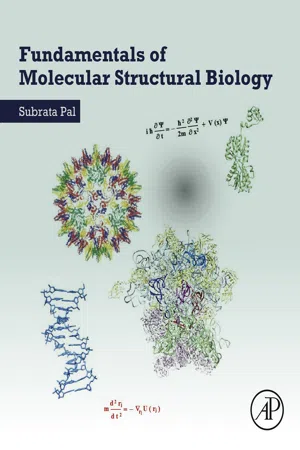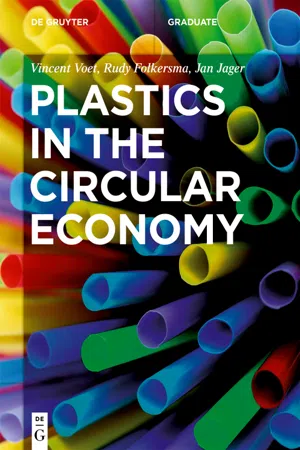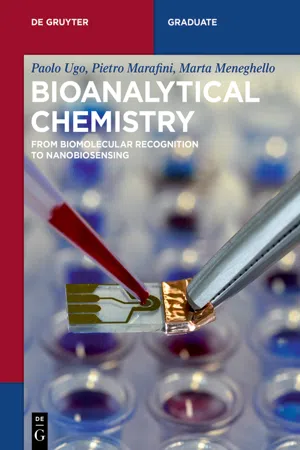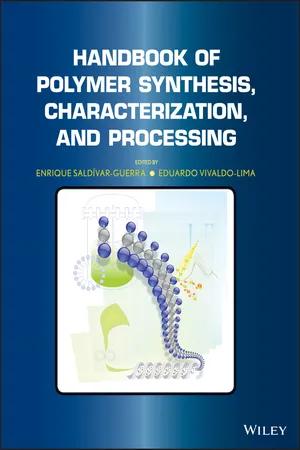Biological Sciences
Monomers
Monomers are small molecules that can bond to form larger molecules known as polymers. In biological systems, monomers are the building blocks for macromolecules such as proteins, carbohydrates, and nucleic acids. These molecules play a crucial role in various biological processes and are essential for the structure and function of living organisms.
Written by Perlego with AI-assistance
Related key terms
9 Key excerpts on "Monomers"
- eBook - ePub
- Alan Cooper(Author)
- 2015(Publication Date)
- Royal Society of Chemistry(Publisher)
1
Biological Molecules
You don’t need to know any biology in order to study biological molecules, but it does help to have some background.Aims This chapter will briefly review the bare bones of biological (macro)molecules. By the end, and together with your previous knowledge and some background reading, you should be able to:- Describe the basic chemical structures of polypeptides, polynucleotides, fats, lipids, and carbohydrates
- Explain what is meant by the primary, secondary, tertiary and quaternary structure of proteins
- Describe the behaviour of fats, lipids and detergents in water
- Explain the anomalous properties of liquid water
- Recall the fundamentals of acid–base equilibrium
1.1 Introduction
This book is mainly about the experimental methods used to understand the physical properties and function of the molecules that make up living systems.These molecules—proteins, polynucleotides, polysaccharides, lipids—are not necessarily any different from molecules we study in other branches of chemistry. But there are some additional factors, arising from their biological origin, which we need to be aware of.- Biological macromolecules are large molecules formed from many smaller units and are (usually) polymers of precise length and specific sequence.
- They (usually) fold or associate into specific conformational assemblies stabilized by non-covalent interactions.
- This (usually) happens in water.
- The molecules are the (usually) successful outcomes of biological evolution.
It is this last point that makes things so exciting for the biophysical chemist. The molecules we see today are the results of countless random (more or less) experiments over millions of years during which living systems have evolved to take advantage of subtle principles of physical chemistry that we barely yet understand. By studying such systems we can learn much about physical chemistry in general, with potential for applications in other areas. - eBook - ePub
- Bengt Kronberg, Krister Holmberg, Bjorn Lindman(Authors)
- 2014(Publication Date)
- Wiley(Publisher)
9 Polymers in SolutionA polymer is a large molecule, a macromolecule, built up of smaller chemical units, Monomers. A natural division of the science of polymers is into biological and nonbiological macromolecules. Biological macromolecules are, for example, proteins, nucleic acids, and polysaccharides while nonbiological macromolecules include the common plastics and adhesives. This chapter deals mainly with water-soluble polymers.Polymer Properties are Governed by the Choice of Monomers
Synthetic polymers are synthesized by the polymerization of Monomers. The Monomers in the polymerization constitute the repeat units, for example, acrylic acid is polymerized into poly(acrylic acid). A polymer can either be linear, branched, or cross-linked, as depicted in Figure 9.1 a. It is important to characterize the category a certain polymer belongs to in order to understand its solution behavior, since it differs considerably between the three categories. When only one type of monomer is used the polymer is termed homopolymer. If the polymer is synthesized with more than one kind of monomer, it is termed a copolymer. The monomer units in a copolymer can be (i) randomly distributed, (ii) distributed in blocks, or (iii) distributed such that one of the Monomers is grafted in chains onto the backbone of the other monomer chain (Figure 9.1 b). Also, the solution properties and the surface chemical properties are very sensitive to which category a copolymer belongs. Some of the structures shown in Figure 9.1 b are strikingly surface active. Surface active polymers are dealt with specifically in Chapter 10 - Jason Birkett, John Lester(Authors)
- 2018(Publication Date)
- CRC Press(Publisher)
Chapter 8Biological molecules
8.1 Introduction
The existence of a cell depends upon its structural components, which maintain its physical integrity, and its functional components, which control its growth, metabolism and reproduction and which regulate these processes. In a great many instances structural and functional roles are closely integrated, even in the simplest cell.The highly ordered, but extremely complex nature of living cells is due to the great variety of organic compounds which may be formed, inherent in the chemical properties of carbon itself. Its ability to form four covalent bonds with other atoms and itself, generating long carbon chains, gives rise to an almost limitless number of possible compounds, including macromolecules with molecular weights as high as 100 million. In all cases, these macromolecules are formed from the linkage, in a series, of smaller molecules, termed Monomers, and hence are called polymers. Even if constructed from a pool containing a relatively small number of different types of monomer molecules the number of different possible sequences of these subunits is theoretically very large indeed. If only a small fraction of all of the possible combinations of Monomers were to be associated with a distinct structural or functional characteristic of the polymer molecule, this number would be more than sufficient to account for the enormous diversity and complexity of living organisms. There are, however, a large number of characteristics common to all cells, irrespective of their origins, which is indicative of a moderately consistent selection of only a few of the possible combinations in each case, suggesting that cellular chemistry is organized and regulated in a highly precise manner.There is, in addition to the macromolecules, a great variety of other organic compounds which are important by virtue of their role as nutrients and intermediary metabolites. However, this chapter focuses only on those which are unique and integral components of cells—the macromolecules.- eBook - ePub
- Subrata Pal(Author)
- 2019(Publication Date)
- Academic Press(Publisher)
Chapter 5 Biomacromolecules Abstract All cells comprise proteins, nucleic acids (DNA and RNA), glycans (carbohydrates), and lipid assemblies. Nucleic acids are made from four different kinds of nucleotides, each of which consists of three components: a pentose sugar, a nitrogenous base, and a phosphate group. DNA is mostly double-stranded—two polynucleotide chains are intertwined around each other in the form of a double helix. Phosphodiester links consecutive sugars in each strand, while hydrogen bonds between complementary bases hold the two strands together. The geometry of base pairs creates in the double helix the major and minor grooves which expose the chemical groups required for interaction with other molecules, particularly proteins. Amino acids are the fundamental building blocks of proteins. A sequence of amino acids, joined together by peptide bonds, forms a polypeptide chain. Based on the nature of amino acid sequences (primary structure), and assisted by water molecules, polypeptides fold into higher-level structures—secondary, supersecondary, tertiary, and quaternary. The structure of a protein is both flexible and dynamic. Keywords Nucleotide; Phosphodiester bond; DNA structure; Major and minor grooves; Amino acid; Peptide bond; Protein structure; Motif; Domain; Fold It has been mentioned earlier (Chapter 1) that all living organisms, plant or animal, are comprised of cells. Conspicuous diversity prevailing in their size, shape, appearance, and many other characteristics notwithstanding, all cells comprise proteins, nucleic acids (DNA and RNA), glycans (carbohydrates), and lipid assemblies. Of these, proteins, nucleic acids, and glycans are considered to be macromolecules—polymers built through the formation of covalent bonds between smaller molecules (the building blocks). Here, in this chapter, we shall mainly focus on the structures of nucleic acids and proteins - eBook - ePub
- Vincent Voet, Jan Jager, Rudy Folkersma(Authors)
- 2021(Publication Date)
- De Gruyter(Publisher)
2 Introduction to polymer science2.1 Classification
The success of plastics can be attributed to their low costs and wide range of properties that can be changed by tweaking the macromolecular structure. This unique structure–property relationship will receive specific attention in the remainder of this chapter. We will start by discussing various ways to categorize polymer materials.The term polymer is derived from the Greek wordsπ o λ(polus = “many”) andυ ´ςμ(meros = “part”). Polymers can be defined as large molecules, sometimes referred to as macromolecules, composed of a large number of repeating units. The exact number required to meet the definition of a polymer depends on the size and chemical structure, but a good rule of thumb is at least 50 repeating units. Smaller molecules are named oligomers, which translates to “few parts”.ε ´ρ o ςThe building blocks that form a polymer molecule are called Monomers, literally meaning “one part”. Monomers can undergo polymerization, in which they react together to form a polymer chain or network structure. Polymerizations are the subject of Section 2.3 .Considering the definition of a polymer, a tremendous amount of possibilities arise: flexible or stiff polymers, polymers derived from nature or those made in factories, polymers that absorb or repel water, polymers applied in airplanes or used in clothing, etc. To create some order, polymers are classified based on various categories, as displayed in Fig. 2.1 .Figure 2.1 Classification of polymers based on origin, chemistry, (physical) properties, polymerization route, and application.2.1.1 Origin
A wide variety of macromolecules is present in nature. Polysaccharides like starch and cellulose are formed in plants, while proteins such as silk and casein can be found in animals. Polynucleotides, known as DNA and RNA, play a crucial role in storing, coding, expressing, and regulating genetic information. While some natural polymers can be used directly as technical materials when harvested, other polymers need to be modified. For example, cellulose can be transformed into cellophane films or rayon and viscose fibers via the xanthate process. The hydroxyl groups in cellulose are modified in a basic environment, and cellulose is regenerated from viscose using acid. Also, technical rubber is produced by crosslinking latex from rubber trees via a process named vulcanization. Macromolecules made by chemically treating natural polymers are named semi-synthetic polymers [7 - eBook - ePub
Vegetable Oil-Based Polymers
Properties, Processing and Applications
- Niranjan Karak(Author)
- 2012(Publication Date)
- Woodhead Publishing(Publisher)
Polymers are composed of large molecules with a high molecular weight, unlike fine chemicals or small molecular compounds. These macromolecules are formed by covalent links of large numbers of simple repeating units with identical constituents, where the addition or subtraction of a few such units does not change the properties. The term ‘polymer’ is a combination of two Greek words: ‘poly’ meaning ‘many’ and ‘meros’ meaning ‘parts’ or ‘units’. A polymer is thus the sum of many parts or units. ‘Polymerisation’ is the process of forming polymers from their respective reactive units.The small molecules which form repeating units are known as Monomers. Monomers typically react in the presence of a catalyst or initiator to form a polymer. The number of repeating units present in each polymer chain is known as the ‘degree of polymerisation’ (DP) and is used to determine the molecular weight of the polymer by the following formula:molecular weight = molecular mass of repeating unit X ‘DP’The high molecular weight of polymers is a result of the high DP, given the number of Monomers in each chain.In a polymerisation process, different polymer molecules may have different numbers of repeating units in their chains and hence the chain lengths are different, even under the same set of reaction conditions in the same batch. This is because the number of reactions involved in the formation of each polymer molecule is very high, so controlling the number of repeating units in different molecules is extremely difficult. The chain length of one molecule will differ from other molecules in the same polymer. Thus the number of repeating units varies from chain to chain, even within the same batch of polymers, so only the average number is taken and the molecular weight is expressed as the average molecular weight.Biopolymers are found in animal and plant sources. Natural polymers include protein-based fibres such as wool and silk (mainly polyamide), carbohydrate fibres such as flax and cotton (mainly cellulose) as well as in tree saps which produce amber and latex (mainly hydrocarbon). The term ‘polymer’ was first coined by Berzelius in 1833. However, it was only in the 1920s that the concept of a polymer as a long sequence of repeating units linked by covalent bonds, was presented by H. Staudinger. (Nobel prize winner for chemistry, 1953).1 - eBook - ePub
Bioanalytical Chemistry
From Biomolecular Recognition to Nanobiosensing
- Paolo Ugo, Pietro Marafini, Marta Meneghello(Authors)
- 2021(Publication Date)
- De Gruyter(Publisher)
Biophysical Studies of Oligonucleotides Containing Duplex Stabilising Modifications, DPhil Thesis, University of Oxford, 2017. Reproduced with permission from the author).1.2 Introduction to proteins
Proteins are large biomolecules, or macromolecules, consisting of one or more long chains of amino acid residues. Like other biological macromolecules, such as polysaccharides and nucleic acids, proteins are essential parts of all living organisms and participate in virtually every process within cells. They can be classified according to their biological function as follows:-
enzymes, which catalyse almost all biochemical reactions within cells and are vital to metabolism;
-
transport proteins, which serve the function of moving other species from one location to another within an organism, for example, haemoglobin that transports oxygen from the lungs to other organs and tissues;
-
structural proteins, which confer stiffness and rigidity to biological components. Some examples are keratin (the main component of hair, nails and some animal shells), collagen and elastin (present in connective tissues such as bones, tendons or cartilages), and the proteins of the cytoskeleton, which form a system of scaffolding that maintains cell shape;
-
antibodies, defence proteins used by the immune system to recognise and neutralise pathogens such as viruses, pathogenic bacteria and substances extraneous to the organism.
There are also many other proteins with different functions, for example, cell signalling and signal transduction, and DNA replication. However, the most interesting proteins in bioanalytical chemistry are enzymes and antibodies. So, in this chapter, we mainly focus on these two types of macromolecules.From a chemical point of view, proteins are polymers of amino acids bound together by peptide bonds. Therefore, we begin our description of proteins with an overview on such fundamental molecules. - Enrique Saldivar-Guerra, Eduardo Vivaldo-Lima(Authors)
- 2013(Publication Date)
- Wiley(Publisher)
Part I
Basic Concepts
Passage contains an image
Chapter 1: Introduction to Polymers and Polymer Types
Enrique Saldívar-Guerra and Eduardo Vivaldo-Lima1.1 Introduction to Polymers
1.1.1 Basic Concepts
Polymers are very large molecules, or macromolecules, formed by the union of many smaller molecules. These smaller units are termed Monomers before they are converted into polymers. In fact, the word “polymer” has a Greek origin meaning “many members.” Natural polymers have been around since the early times in Planet Earth. Life itself is linked to polymers since deoxyribonucleic acid (DNA ), ribonucleic acid (RNA ), and proteins, which are essential to all known forms of life, are macromolecules. Cellulose, lignin, starch, and natural rubber are just a few other examples of natural polymers. Some of these polymers were used by early human civilizations to produce simple artifacts; for example, the play balls from natural rubber for the ball game of several of the Mesoamerican civilizations (which contained ritual content and not only entertaining purposes). In the 1800s, natural polymers began to be chemically modified to produce many materials, such as vulcanized rubber, gun cotton, and celluloid. Although natural polymers are very important, this book is mainly concerned with synthetic polymers, especially organic synthetic polymers. The chemical reaction by which polymers are synthesized from Monomers is termed polymerization; however, this is a generic term, since there are a number of chemical mechanisms involved in different polymerization reactions.Synthetic polymers are relatively modern materials, since they entered into the technological and practical scene only in the first decades of the twentieth century. This makes them very different from some other materials that have been known to humanity for centuries or millennia. Also, given the fact that synthetic polymers are created by chemical reactions, the possibilities of building different polymers are virtually endless, only restricted by chemical and thermodynamic laws and by the creativity of the synthetic polymer chemist. These endless possibilities have given rise to an enormous variety of synthetic polymers that find application in almost every conceivable field of human activity that deals with matter or physical objects. In addition, the enormous molecular structural versatility that is derived from the rich synthetic possibilities, translates into materials with extremely diverse properties, and therefore applications.- eBook - ePub
Introductory Bioelectronics
For Engineers and Physical Scientists
- Ronald R. Pethig, Stewart Smith(Authors)
- 2012(Publication Date)
- Wiley(Publisher)
Leaving aside the water content of a cell, macromolecules such as proteins, nucleic acids (DNA, RNA), and polysaccharides make up a large percentage of a cell's mass. The building blocks for these macromolecules are small organic molecules, namely fatty acids, sugars, amino acids and nucleotides. This chapter describes the chemical structures and functions of these molecular building blocks, and the biological importance of the macromolecules and macrostructures they combine to form. A summary description is then given of how these macromolecules and microstructures interact and function in different types of cell.After reading this chapter a basic understanding should be obtained of:i. basic biochemical and biophysical properties of fatty acids, carbohydrates, amino acids and nucleotides;ii. basic biochemical and biophysical properties of biomembranes, proteins, DNA and RNA, and their biological roles;iii. the genetic code and the central dogma of molecular biology (DNA makes RNA makes protein);iv. the differences between prokaryotic and eukaryotic cells;v. mammalian blood cells and the immune system;vi. bacteria, viruses and prions;vii. cell life-cycle, cell culture, tissue engineering and cell–cell communication.2.2 Lipids and Biomembranes
Cells of higher organisms are separated, but not isolated, from their surroundings by their cytoplasmic membrane, which also serves to act as anchors for proteins that transport or pump specific chemicals into or out of a cell. Membranes also define the boundaries of intracellular organelles and the nucleus in eukaryotic cells. The main structural components of biological membranes are lipids, which exist as derivatives of fatty acids. The term ‘lipid’ covers a wide range of molecules, including oils, waxes, sterols, certain (fat-soluble) vitamins and fats. The one property they all share in common is that they are hydrophobic. When placed in water individual lipid molecules will adopt a configuration that leads to minimum contact with water molecules, and will cluster into a group with other lipid molecules. This is exemplified by the formation of oil droplets in water, and how lipids in an aqueous medium segregate into a separate nonaqueous phase.
Learn about this page
Index pages curate the most relevant extracts from our library of academic textbooks. They’ve been created using an in-house natural language model (NLM), each adding context and meaning to key research topics.

